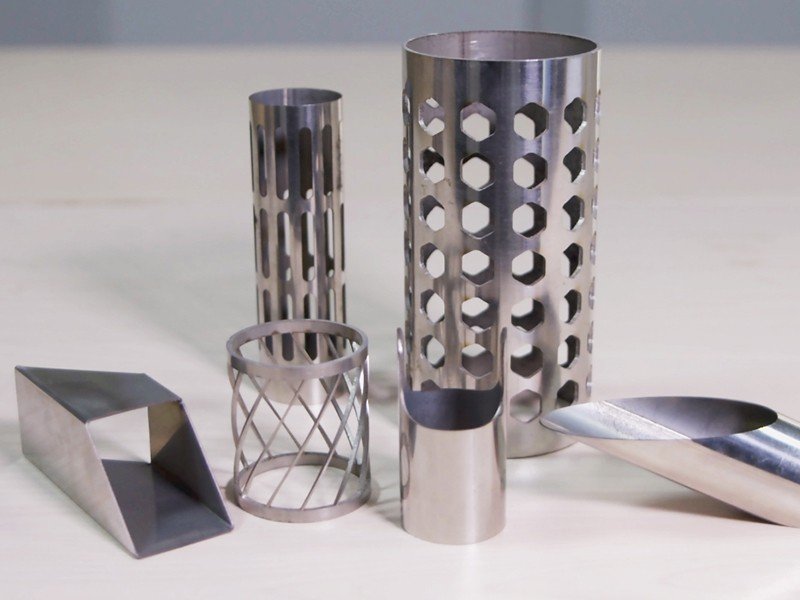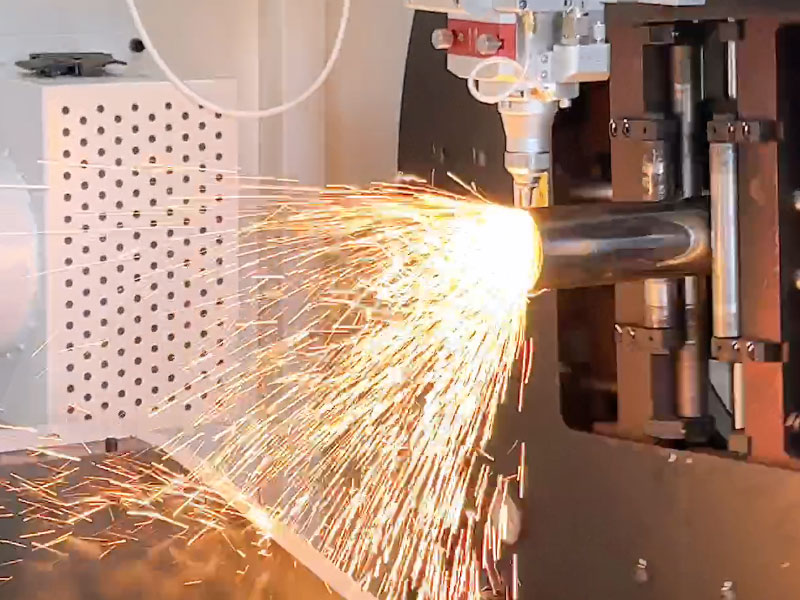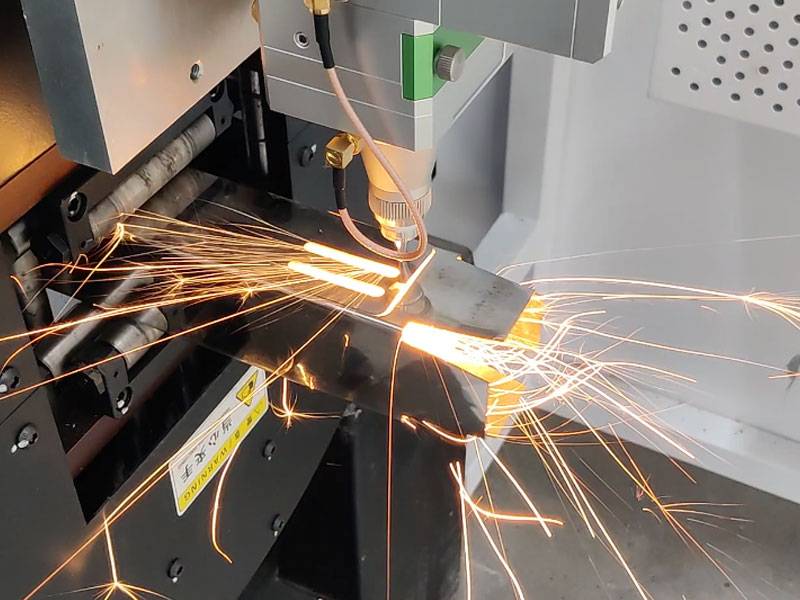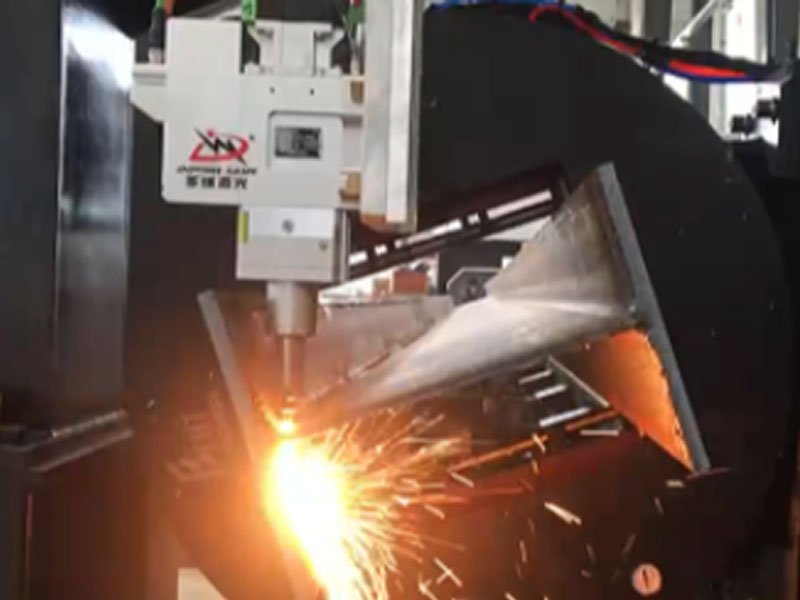For many users who purchase metal tube laser cutting equipment, choosing the right tube laser cutting machine is important, but choosing the right tube laser cutting machine is more important.
This blog post will focus on the two common forms of laser cutting pipe equipment : Stereoscopic Cutting Vs Vertical Cutting. I hope it will be helpful to you.

Before Purchasing a Tube Laser Cutting Machine, You Need to Know
1.Understand your needs
For example, factors such as the shape and size of the tube, the requirements for cutting graphics, and after-sales service. Industrial processing equipment is not as ubiquitous as car repair.
2.The cost of tube laser cutting machine
Purchase the ideal laser tube cutting equipment within the cost range that you can afford.
Stereoscopic Cutting Vs Vertical Cutting
Among the cutting methods of laser tube cutting machines, there are currently three common forms of laser cutting machines on the market. Stereoscopic cutting and vertical cutting are the most common methods used in laser cutting machines. The biggest difference is mainly in the movement mode and applicable scenarios of the fiber cutting head.

1.Vertical cutting
The laser cutting head can only move up and down, which is mainly suitable for cutting round tubes, mainly to achieve cutting power.
Advantages: high efficiency and high cost performance
Disadvantages: single processing method
2.Stereoscopic cutting
On the basis of vertical cutting, horizontal and vertical cutting are added to suit the vertical cutting of square tubes, special-shaped tubes, round tubes, etc. on the surface of metal tubes.
Advantages: It can meet a variety of processing needs, and realize cutting and punching on metal tubes.
Disadvantages: Corner splicing requires special treatment, and three-dimensional drawing personnel are required to cooperate.
3.Three-dimensional cutting
On the basis of three-dimensional laser cutting, a laser cutting head with tilting function is added. “Five-dimensional laser tube cutting” is the bevel function of the laser tube cutting machine
Advantages: It can realize the bevel and groove cutting functions
Disadvantages: The current market price is expensive and immature compared to ordinary laser cutting heads
Chuck method:
- Single chuck: economical and affordable, but the disadvantage is that the application field is single, mainly used for vertical cutting
- Doppelspannfutter: It can realize automatic feeding and non-automatic feeding functions. It is assumed that metal pipes will have excess tailings in the later stage, causing material loss, and manual cutting and processing are required
- Multiple chucks: It can achieve 0 tailing cutting, but the disadvantage is that there are many brands of fiber lasers, and the market prices are very different.

Comparative Analysis of Stereo Cutting and Vertical Cutting
| Vergleichsfaktor | Stereoskopisches Schneiden | Vertikales Schneiden |
|---|---|---|
| Cutting Precision | Eignet sich hervorragend zum hochpräzisen Schneiden komplexer 3D-Formen und Oberflächen, kann jedoch durch die Maschinenkalibrierung beeinflusst werden. | Bietet höhere Präzision beim 2D-Schneiden, bei stabilem Betrieb, geeignet für einfache geometrische Formen. |
| Materialnutzung | Hohe Materialausnutzung, ideal für komplexe Formen und polyedrisches Schneiden, minimiert Abfall. | Geringere Materialausnutzung, kann beim Schneiden komplexer Formen mehr Abfall verursachen. |
| Специализируется на высокоточных режущих станках для различных отраслей промышленности. | Aufgrund der Komplexität der 3D-Pfade ist die Verarbeitungsgeschwindigkeit geringer. Geeignet für kleine Chargen und hochpräzise Schnitte. | Schnellere Verarbeitungsgeschwindigkeit, ideal für die Massenproduktion und das Schneiden von 2D-Formen mit einfacheren Pfaden. |
| Operative Komplexität | Hohe betriebliche Komplexität, die spezielle Fähigkeiten erfordert und eine komplexe dreidimensionale Raumsteuerung beinhaltet. | Relativ einfache und für die meisten Bediener geeignete Bedienung mit standardisierten Prozessen. |
| Equipment Cost | Höhere Gerätekosten aufgrund komplexer 3D-Steuerungssysteme und höherer Wartungskosten. | Niedrigere Gerätekosten durch einfaches Design und geringere Wartungskosten. |
When to choose 3D cutting or vertical cutting
Automotive industry: Bei der Herstellung von Autoauspuffsystemen müssen Rohre aufwendig gebogen und speziell geformt werden. Für derart komplexe Anforderungen ist 3D-Schneiden besser geeignet. Bei Rahmen oder anderen geraden Rohren kann vertikales Schneiden die Aufgabe schnell und effizient erledigen.
Baugewerbe: Stützstrukturen oder dekorative Rohre erfordern präzise Schnitte in mehreren Winkeln. 3D-Schneiden ist die bessere Wahl. Beim Schneiden von Standardstahlrohren zur Stützstruktur ist vertikales Schneiden aufgrund seiner hohen Geschwindigkeit von Vorteil.
Möbelherstellung: Möbelrahmen und -halterungen erfordern normalerweise Rohrschnitte in Standardgröße, und vertikale Schnitte können diese Aufgaben effizient erledigen. Für einige einzigartige Designelemente kann 3D-Schnitt erforderlich sein, um komplexe Formen zu erreichen.
How to choose the right cutting technology for different pipe processing
3D cutting:
Geeignet zum Schneiden von Rohren mit komplexen Formen und mehreren Winkeln, wie z. B. zum Schneiden von Auspuffrohren im Automobilbau oder zum Schneiden von speziell geformten Stützstrukturen im Bauwesen. Beim dreidimensionalen Schneiden kann eine mehrachsige Verbindung erreicht werden, wodurch die Schnittkurve präziser und komplexer wird und den Anforderungen der High-End-Fertigung gerecht wird.
Auch in Situationen , in denen Material gespart und die Auslastung verbessert werden muss, ist das dreidimensionale Schneiden vorteilhafter , da sich dadurch die Nutzung jedes Rohrteils maximieren und Abfall reduzieren lässt.
Vertical cutting:
More suitable for standard pipe cutting that requires high speed and high precision, such as cutting table and chair brackets in furniture manufacturing or cutting pipe fittings in pipeline engineering. The cutting path of vertical cutting is simple and stable, and can quickly complete mass production.
For medium and low complexity cutting tasks, vertical cutting can provide an economical and efficient solution for most conventional industrial applications.

Future development of laser tube cutting technology
Automation and intelligence: With the development of Industry 4.0, laser tube cutting machines will increasingly integrate automation and intelligent technologies. Automation devices will be able to automatically adjust the position and cutting path of the laser, reduce manual intervention, and improve production efficiency.
Multifunctionality: Future laser cutting machines will not only be limited to cutting functions, but may also integrate other processing technologies such as punching, welding, and marking, enabling the equipment to complete multiple tasks in one stop.
Improvement space for stereoscopic cutting and vertical cutting technology
Stereoscopic cutting:
- Precision improvement: By improving the control accuracy of the laser and the motion system of the equipment, the future stereoscopic cutting technology will be able to maintain high-precision cutting on more complex geometric shapes.
- Speed optimization: Durch eine schnellere Bewegungssteuerung und Laser-Scan-Geschwindigkeit lässt sich die Verarbeitungsgeschwindigkeit des stereoskopischen Schneidens voraussichtlich weiter verbessern, sodass es in der Massenproduktion breiter eingesetzt werden kann.
Vertical cutting:
- Materialanpassungsfähigkeit: Mit der Entwicklung neuer Materialien wird die vertikale Schneidtechnologie weiter optimiert, um sie an verschiedene Arten von Metall- und Legierungsrohren anzupassen und ihre Schnittqualität zu verbessern.
- Verbesserung der Energieeffizienz: Durch die Verwendung effizienterer Laserquellen und optimierter Schneidpfade wird das vertikale Schneiden energiesparender und umweltfreundlicher, wodurch der Energieverbrauch gesenkt wird.
Abschluss
Stereoskopisches Schneiden eignet sich für komplexe Formen und Mehrwinkelschneiden und ist für Situationen geeignet, die hohe Präzision und hohe Materialausnutzung erfordern. Vertikales Schneiden eignet sich gut zum schnellen Schneiden einfacher Formen und ist für Massenproduktion und konventionelle Verarbeitungsanforderungen geeignet.
